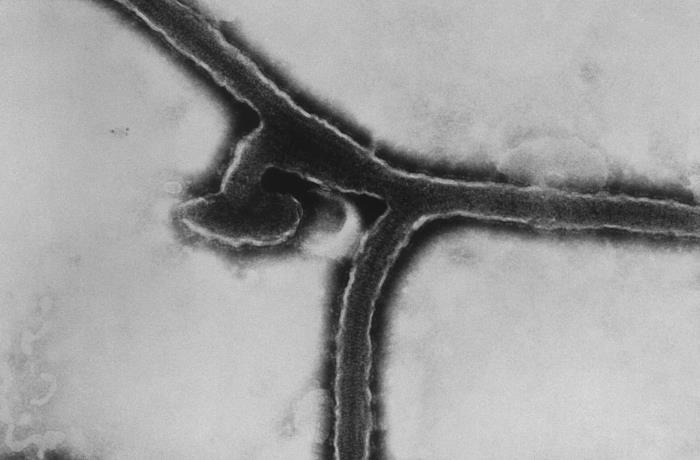On a follow-up on our report of a suspected third Marburg Virus Disease (MVD) case in Ghana, Director-General of the World Health Organization, Tedros Adhanom Ghebreyesus tweeted today:
Two more people with Marburg identified in Ghana, family of the first case. One has unfortunately died. Outbreak total now 4 cases and 3 deaths. Extensive field investigation underway, WHO is on the ground supporting health authorities.

Marburg hemorrhagic fever is a rare, severe type of hemorrhagic fever which affects both humans and non-human primates. Caused by a genetically unique zoonotic (that is, animal-borne) RNA virus of the filovirus family, its recognition led to the creation of this virus family. The five species of Ebola virus are the only other known members of the filovirus family.
Recent scientific studies implicate the African fruit bat (Rousettus aegyptiacus) as the reservoir host of the Marburg virus. The African fruit bat is a sighted, cave-dwelling bat which is widely distributed across Africa. Fruit bats infected with Marburg virus do not to show obvious signs of illness. Primates, including humans, can become infected with Marburg virus, which can progress to serious disease with high mortality.
Just how the animal host first transmits Marburg virus to humans is unknown.
Related: The World’s Deadliest Viruses
After an incubation period of 5-10 days, the onset of the disease is sudden and is marked by fever, chills, headache, and myalgia. Around the fifth day after the onset of symptoms, a maculopapular rash, most prominent on the trunk (chest, back, stomach), may occur. Nausea, vomiting, chest pain, a sore throat, abdominal pain, and diarrhea then may appear. Symptoms become increasingly severe and may include jaundice, inflammation of the pancreas, severe weight loss, delirium, shock, liver failure, massive hemorrhaging, and multi-organ dysfunction. The case-fatality rate for Marburg hemorrhagic fever outbreaks is between 23-88%.
Confirmed cases of Marburg HF have been reported in Uganda, Zimbabwe, the Democratic Republic of the Congo, Kenya, and Angola. Cases of Marburg HF have occurred outside Africa, though infrequently.
- France monkeypox tally eclipses 1800 cases
- Ho Chi Minh City reports 294% increase in dengue fever cases in 2022
- Acute hepatitis cases of unknown origin in children linked to adeno-associated virus 2: Studies
- Brazil: Monkeypox situation ‘is very worrying’
- Colorado confirms first anthrax cases in cattle since 2012
- Alabama: 4 vibriosis cases reported in Mobile County year to date
- Ukraine: 3,533 rotavirus cases reported in first six months of 2022
- Norway monkeypox risk assessment: ‘A very small probability of an epidemic of monkeypox in the general population’


Here is the WHO & REDROS Study & Proof findings: Just how the animal host first transmits Marburg virus to humans is unknown. He needs to be SACKED A.S.A.P. Along with Dr.Anthony Fauci & Co Pfizer, Morderna AstraZenica etc, etc, etc.
CHINA & RUSSIA`s MASSIVE RED FLAG INCOGNITO – Worldwide Attack WW3 Begins.